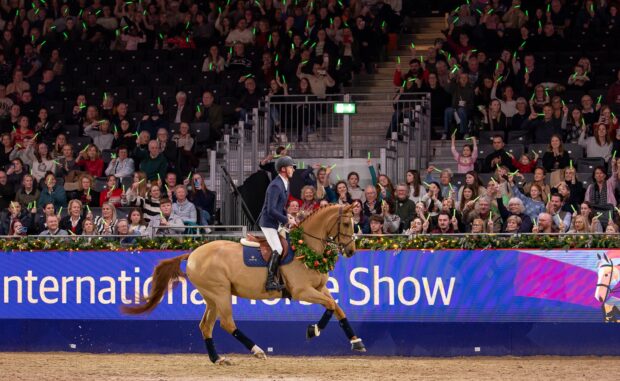Expert advice from Jennie Loriston Clarke on common lungeing problems and how to solve them
To lunge effectively it is necessary to have the right equipment. These shouldinclude:
- A lungeing cavesson with three metal rings
Some horses dislike the weight of a cavesson and in these cases a strong headcollar can be used. Put the headcollar over a snaffle bridle and attach the lunge line through the noseband of the bridle and bit ring to the headcollar, giving control without direct pressure.
- Lunge rein
Cotton webbing is best and it should be 24ft long and have a buckle fastening with a swivel at one end.
- Lunge whip
This should be around 8ft long with a 6ft lash.
- Brushing boots
A young, unbalanced horse is quite likely to knock himself when learning to lunge. Boots all round prevent unnecessary injuries.
- An assistant
Although you need someone to help in the early stages, I then prefer to lunge on my own as horses seem to pay more attention when only one person is there.
Top tips
- Horses are powerful and possess quick reactions. Never lunge without wearing a riding hat and gloves and don’t take chances, always be aware of the potential problems of being in close proximity during lungeing.
- Always give the horse your full attention and never become distracted. Give clear, firm commands that may have to be repeated and remember to praise a young horse when he responds correctly.
- The lunge rein must be collected into the hand so that it can be fed out when required. Never coil the rein around your hand, in case the horse pulls away and your hand becomes caught.
- Never bring the horse back to walk by tugging on the lunge rein.The main aim of lungeing is that the horse learns to go forward. Pulling will confuse him and make him unsure of himself.
- Remember to take your spurs off before you start lungeing. These can cause you to trip, which could frighten the horse and cause an accident.
Common problems
A common problem with the young horse is pulling away, which is especially likely on the side nearest to the stables, field or gate. Be prepared and in the early stages ask an assistant to stand at this point to vigorously encourage him forward.
A young horse will at some stage always turn to face the handler. Make sure you are not causing the problemby repeatedly asking him to go forward, then slowing him down again.
Be firm; walk up to him, keeping a contact on the lunge line, and start him off again. He must learn that this is unacceptable behaviour.
Use a soothing voice when he is good and make sure you keep in the correct position.
Read more about lunging:



